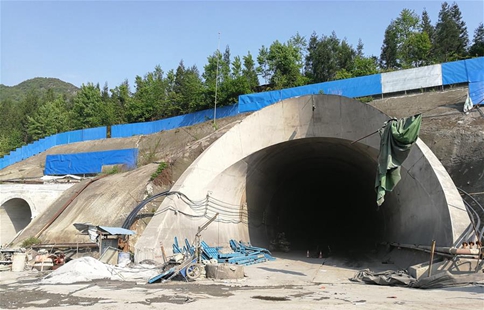SAN FRANCISCO, May 3 (Xinhua) -- A new study reveals that organic matter whose breakdown would yield only minimal energy for hungry micro-organisms preferentially builds up in floodplains, illuminating a new mechanism of carbon sequestration.
The study, conducted by researchers from Stanford University, uncovers the previously unknown mechanism that explains why microbes sometimes fail to break down all the plant and animal matter, leaving carbon underfoot, where soils and sediments contain more carbon than in all of the world's plants and the atmosphere combined.
As it represents a significant potential source of the greenhouse gas carbon dioxide, understanding where and how long the buried organic matter lingers is crucial for scientists and policymakers to better predict and respond to climate change.
"Our picture of how organic matter is broken down in soils and sediments is incomplete," said Kristin Boye, an associate staff scientist at the Stanford Synchrotron Radiation Lightsource at the SLAC National Accelerator Laboratory and lead author of the study published this week in Nature Geoscience.
"With this study, we are gaining new insights into the mechanisms of carbon preservation in low- or no-oxygen subterranean environments," Boye said.
For the study, the research team collected core samples of buried sediments from four floodplains in the upper Colorado River Basin in the U.S. states of Colorado and New Mexico.
With collaborations from colleagues working at other research institutes, the Stanford researchers found that, in contrast to the layers where oxygen was available, leftover carbon compounds in the sediment samples where sulfur had been used for respiration were mostly of the sort that requires more energy to degrade than would be liberated through the degradation itself. Of no use, then, to growing microbes, these carbon compounds had remained within the deeper sediment layers.
Floodplains, like those sampled in the study, rank among the most common areas globally for the internment of plant and animal matter by water-borne sediments. The oxygen-poor conditions created underground there are known to sequester carbon, but as the study suggests, partly for reasons previously unrecognized and with unforeseen consequences. For such flood-prone, low-lying areas are by definition close to waterways. Soluble, unused organic material can migrate into an aerated waterway for subsequent breakdown, triggering algae blooms and other water quality issues while also leading to carbon dioxide production.
To date, models of local ecosystems and broader climate change have focused chiefly on microbial enzymes and the availability of other elements for organic matter breakdown, and have failed to take into account this newfound carbon preservation mechanism.
"Soils and sediments are a huge and dynamic reservoir of carbon," study senior author Scott Fendorf, a professor of soil biogeochemistry at Stanford Earth, was quoted as saying in a news release. "That's why we worry about turnover times here with regard to how fast organic carbon is degraded and released as carbon dioxide into the atmosphere."

















